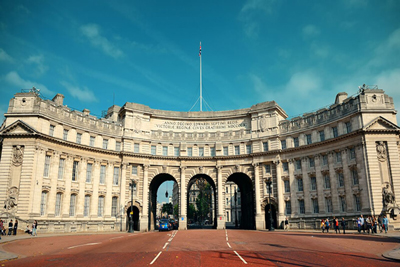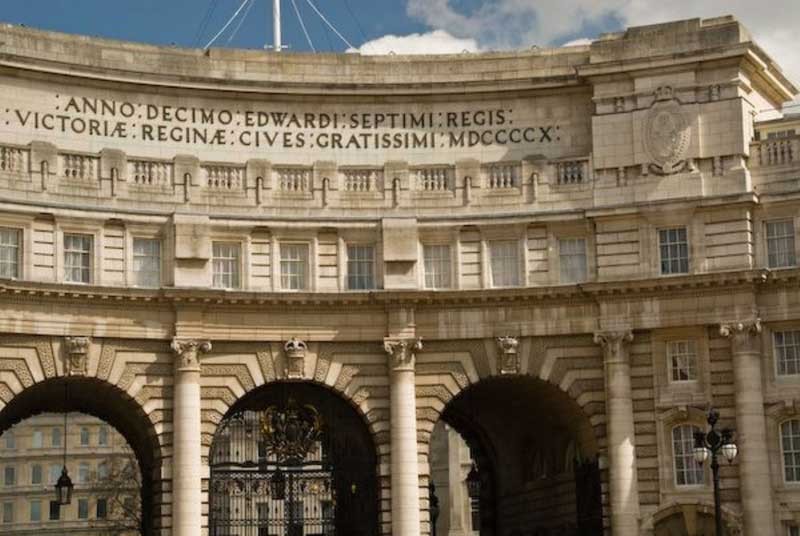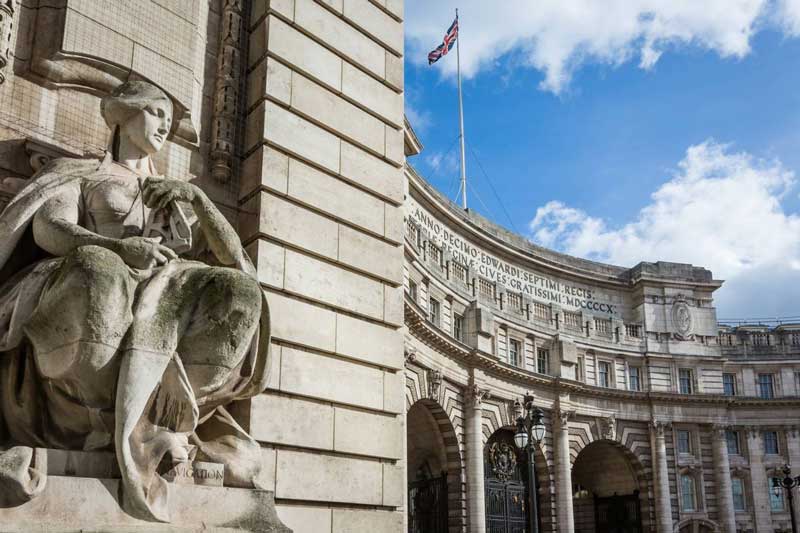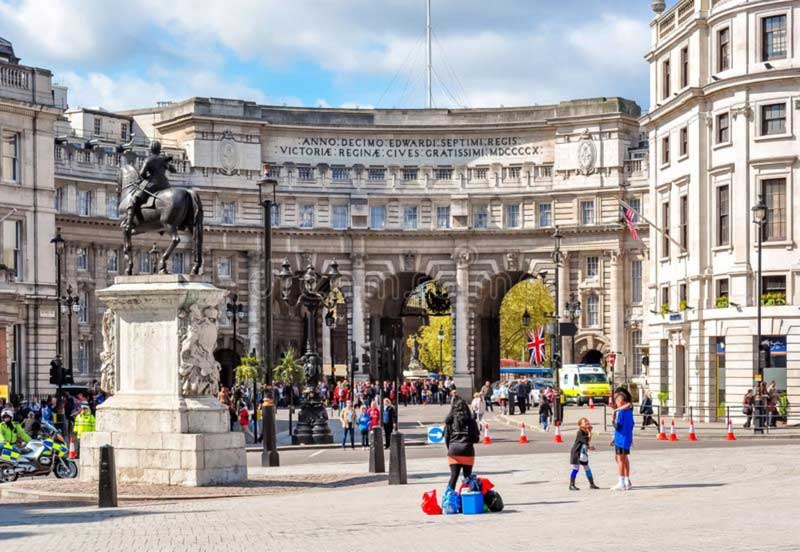
Reckoned as one of the famous landmarks of London, the quintuple arched ceremonial gateway of Admiralty Arch stands majestically at the Northeast end of The Mall, reflecting the features of a triumphal arch, which is unlike the usual government buildings. The unique building, designed by Aston Webb in 1910, was commissioned by King Edward VII in memory of his mother, Queen Victoria, to provide an elegant ceremonial passage from the hectic Trafalgar Square towards Buckingham Palace and a Latin inscription on the underside of the Arch denotes this memorial connection.
But unfortunately, the king did not live long enough to see its completion in 1912. Nevertheless, apart from the magnificent Admiralty Arch, Aston Webb also refaced Buckingham Palace, laid out the Memorial Gardens and designed the gilt statue of Victoria in front of Buckingham Palace, which provides a striking counterpoint to the Admiralty Arch at the other end of The Mall.

As a part of the same development project, Sir Aston Webb widened The Mall, while the old Mall, which dates from the time of Charles II, remained untouched beside the current thoroughfare. However, regular traffic does not pass through the massive central arch, which is open only for state occasions. While the small outer arches are only for pedestrian traffic, the remaining central arches are for vehicles. The Admiralty Arch, named after the Old Admiralty Building it adjoins, housed various government offices.
Initially, a flat in the north wing of the building was intended to be the residence of the First Lord of the Admiralty, which finally served as the official residence of the First Sea Lord, the military head of the Royal Navy and Naval Services of the United Kingdom. Interestingly, it was the place, from where Admiral Prince Louis of Battenberg gave the order to mobilise the fleet, at the onset of the First World War in 1914.

Designed by Sir Aston Webb, the construction of the Admiralty Arch, which combines the features of a triumphal arch, along with those of a government office building, was carried out by the John Mowlam Company, one of the largest construction and civil engineering companies in the United Kingdom. The arch is flanked by the decorative sculptures of Navigation on the left and Gunnery and the right, designed by the English sculptor Thomas Brock. Strangely, the inside wall of the northernmost arch has a small, but odd protrusion in the shape of a human nose, which was installed in 1996 by the artist Rick Buckley as a symbol of social protest against what he termed the Big Brother society.
However, placed about seven feet off the ground, making it about waist height for anyone mounted on horseback, the nose is traditionally thought to honour the Duke of Wellington, known for having a large nose and soldiers would rub the nose for good luck as they rode through the arch. There is a warren of tunnels and chambers beneath the building, including vaults which were once used to house the government archives.

The Admiralty Arch plays an important role on ceremonial occasions, with processions such as royal weddings, funerals, coronations and other important public processions such as the 2012 processions at the end of the Olympic and Paralympic Games passing through the central arch. However, in the 1990s, the Royal Navy left Admiralty Arch for their new headquarters on Whitehall and the Arch remained empty until 2000, when the Cabinet Office occupied the building.

Finally, the government sold the building on a 125-year lease in 2012, for the proposed redevelopment into a Waldorf Astoria hotel, offering views over Buckingham Palace, four private apartments and a private members club. The new proposed hotel is scheduled to open in late 2023. However, according to the contract, even after the conversion of the Arch to a hotel, it will be required to fly the naval White Ensign on special state occasions.